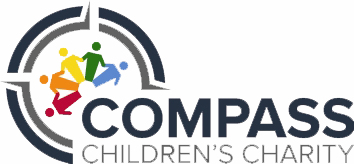POVERTY
Children bear the brunt of poverty throughout the world ….
Extreme poverty is what catapults many children onto life on the streets.
Poverty creates exploitative environments. It means that children are denied the chance to go to school, as parents oblige their young sons and daughters to go out to work to boost the household income. You don’t have to journey very far into Latin America’s cities to see child labour in full and flagrant swing. Stop your car at the traffic lights and children will appear from nowhere, clamouring to wash your windscreen or sell you some sweets.
Take a wander around public parks, the fringes of street markets or underpasses and you will see young children stuck in sex slavery, dolefully touting their bodies to passers-by.
How have these children ended up in such desperate situations?
Many of the children Compass Children’s Charity helps support have fled the extreme poverty they experienced at home, in the hope that fending for themselves on the streets will prove a better economic alternative. They are always proven wrong.
How you can help us change things
Eradicating urban poverty in the world is a task that will take the commitment of national and local governments, and our programme partners on the ground are constantly pushing for planning policies and resource allocation that put children’s rights centre stage.
By making a donation to Compass Children’s Charity, you will be contributing to a network and charity that nurtures each child’s talents and provides the opportunities for them to flourish, away from the violent reality of the streets.
Addiction
Most children who find themselves living on the streets of Latin American cities will sooner or later become addicted to drink or drugs.
Homeless, hungry, and often physically and sexually abused, young boys and girls turn to whatever substance can help alleviate the pain. The most common drugs are glue and crack (cocaine), with jars of glue particularly prevalent and easy to get hold of.
One little jar, its contents inhaled frequently, will typically last a child a day. You can see the effects of glue immediately – children appear zoned out, lethargic, and after a few hours they will slump over on the street, incapable of telling you their name or age. This neurotoxic substance helps to take alleviate cold, hunger and pain, but it is also highly addictive and causes hallucinations as well as brain damage.
Casa Alianza’s residential programmes are there to help children who actively want to leave the streets, and children who enter voluntarily understand that they cannot bring drugs into the centre. The staff goes all out to rehabilitate children, help them beat their addiction and transition to a healthy and sustainable way of living.
STREET CHILDREN – THE HIDDEN FACE OF HIV/AIDS
For a street child, the chances of being infected with HIV/AIDS are particularly high.
The reality is that a lot of children living on the streets are sexually active from an early age, perhaps as young as nine or ten. Many will be sexually abused and exploited – forced into prostitution or resorting to selling their bodies as the only means of survival.
Many other children fall victim to HIV/AIDS via drugs, which they use in an attempt to block out the bleak existence of life on the streets.At risk, but routinely ignored
Despite the fact that street children are especially vulnerable to becoming infected with the HIV virus, most national governments cannot honestly claim to have made even the most basic provision for them in local, regional or national care programmes.
If you were an HIV-infected child living on the streets in Latin America, you would find yourself being denied access to essential healthcare, excluded from research studies on HIV/AIDS and missing out on what limited funding is available.
Specialist healthcare for children with HIV
After several young children who were living at Casa Alianza Mexico died from AIDS in Mexico City, in 2001 they launched their first dedicated programme for street children with HIV/AIDS.
Known as LUNA, what started off as an outreach programme soon grew into a comprehensive care model, including:
- educating street children about sexual health
- counselling services and treatment for affected children
- care for street children with full-blown AIDS.
The staff at Casa Alianza receive regular training on how to educate children about these issues. And they don’t just help the children living in the residential centres – they also offer the same services to residents of other organisations who work with street children who don’t have access to preventative, educational, medical, and therapeutic services.
Since 2001, direct assistance has been provided to hundreds of HIV-infected children in the residential programmes as well as thousands of children on the streets. Also provided is confidential counselling via our free HIV/AIDS helpline.
Help us reach more HIV-positive street children
We sorely want to provide this level of support to children not just in Mexico, but in all of the countries which we support. That’s why we need your help.
Donate today – your money will help give street children improved access to HIV/AIDS preventative education and specialist treatment.

